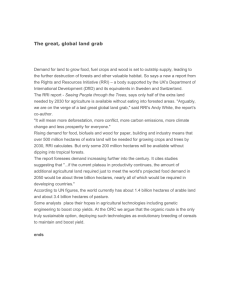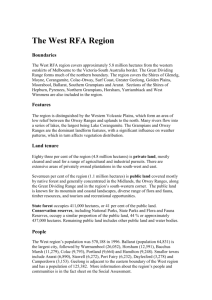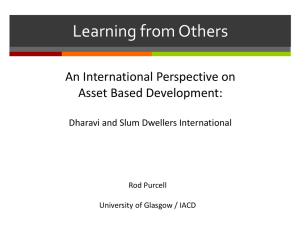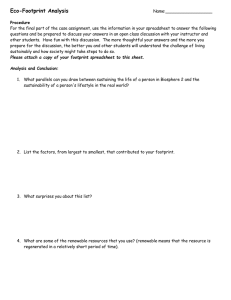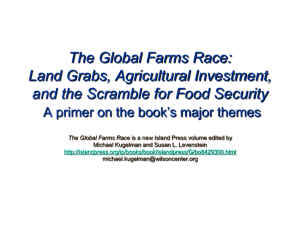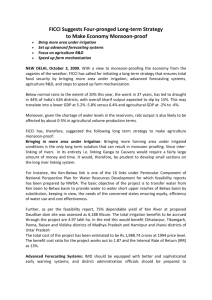3 - Population Matters
advertisement
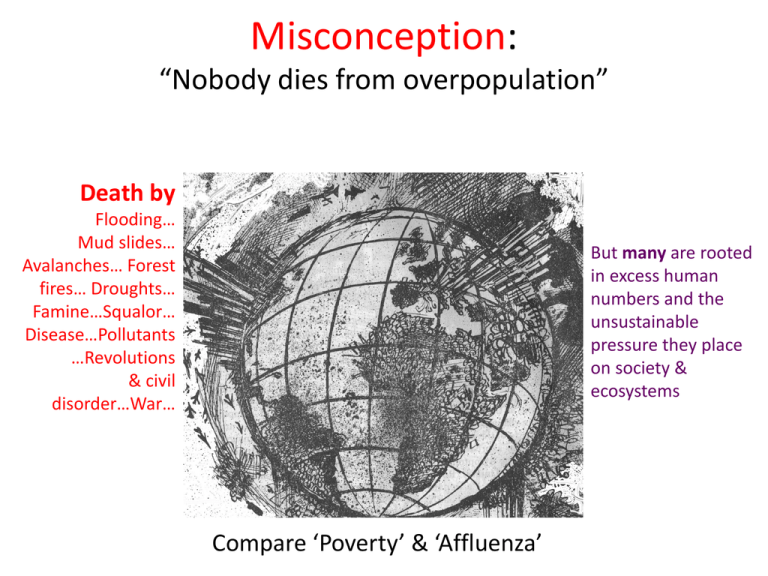
Misconception: “Nobody dies from overpopulation” Death by Flooding… Mud slides… Avalanches… Forest fires… Droughts… Famine…Squalor… Disease…Pollutants …Revolutions & civil disorder…War… But many are rooted in excess human numbers and the unsustainable pressure they place on society & ecosystems Compare ‘Poverty’ & ‘Affluenza’ LONDON (Reuters), January 30th, 2012: “The world is running out of time to make sure there is enough food, water and energy to meet the needs of a rapidly growing population & to avoid sending up to 3 billion people into poverty, a U.N. report warned on Monday. As the world's population looks set to grow to nearly 9 billion by 2040 from 7 billion now, & the number of middle-class consumers increases by 3 billion over the next 20 years, the demand for resources will rise exponentially.” United Nations Secretary-General's High Level Panel on Global Sustainability. http://www.un.org/gsp/ Demographic take-over •In Sudan, South Korea has acquired 690,000 hectares of land to grow wheat. •The United Arab Emirates, which already has 30,000 hectares in Sudan, is investing in another 378,000 hectares to grow corn, alfalfa, wheat, potatoes and beans. •In Tanzania, Saudi Arabia is seeking 500,000 hectares. •China has acquired 2.8 million hectares in the Democratic Republic of Congo to create the world’s largest oil-palm plantation and is negotiating for 2 million hectares in Zambia to grow jatropha. Reality check: Quantity versus Quality Declining quality of life… ‘Dignity’… Privacy… Personal Space… Tranquility… Choice… Democracy… Human rights… Job opportunities… education & health and social care facilities… Useful artifacts… Leisure options…… Case study: ‘World of slums’ Sao Paolo, Brazil Case study: ‘World of slums’ In absolute terms, more people live in slums. From 2000-2010, the absolute numbers of slum dwellers increased from 776.7 million to 827.6 million Why is that? Many people probably will answer “migration from the countryside”. It is not the main reason. 25% of that growth can be put down to that factor. 50% of the increase of 55 million extra slum dwellers came from population growth in existing slum homes; 25% by people living on the edge of cities whose homes became engulfed by urban expansion. Urban inequalities are indeed appalling but, whatever the cause, it will be a lost one unless the ‘numbers’ factor is not resolved (Source: UN Human Settlements Programme) Case study: Yemen Yemen’s population is set to increase from 23 million (in 2008) to 61 million in 2035. In the governorate of Dhamar, the boom in newborns will put a huge strain on social facilities • School enrollment jumped to around 1 million between 2004 & 2009, with an increase of 500,000 students • More teachers will be required; approx. 23,765 teachers for primary education will be needed @ 1 teacher for every 26 students. • The number of teachers required for secondary schools in Dhamar would increase by 2,187. • Secondary education costs would rise to over YR 10 billion ($44 million). • Extra classrooms would be required, at a cost of $738 million The health sector suffer similar strains • It would be extremely difficult to improve the current service level with continued population growth at the current fertility rate. • Costs for the health sector are projected to increase by $25 million over 2009. • The number of doctors needed to cover these requirements will rise to 630. Misconceptions: “Everyone could fit into…” The Netherlands is crowded but the Dutch don’t starve… Reality check: ‘footprints’ & ‘carrying capacity’ Misconception: “Enough food to go around” Reality Check • The total amount of food produced in world today cannot be simply divided by number of mouths to ‘prove’ that there is enough to go round. • Real life is more complicated • In any case, people do not live ‘by bread alone’ Reality check Food today Recipe for ruin Sustainable systems can only ‘bake a smaller cake’ & do it more slowly. The number of mouths, not just diets and distribution, is critical Misconception: “Real problem is rich” Aquifer depletion is often tied closely to population growth in poorer countries Deforestation by shifting cultivators in Malawi whose population has grown from 7 million in 1984 to over 14 million in 2010 Ghandi’s famous quote is a meaningless platitude without numbers Is “every man” 7 billion, 17 billion, 27 billion? …… How many is ‘every’? ‘Need’ is also a slippery concept and ‘greed’ is far from easy to eradicate


